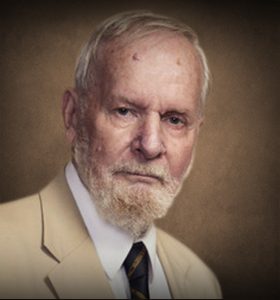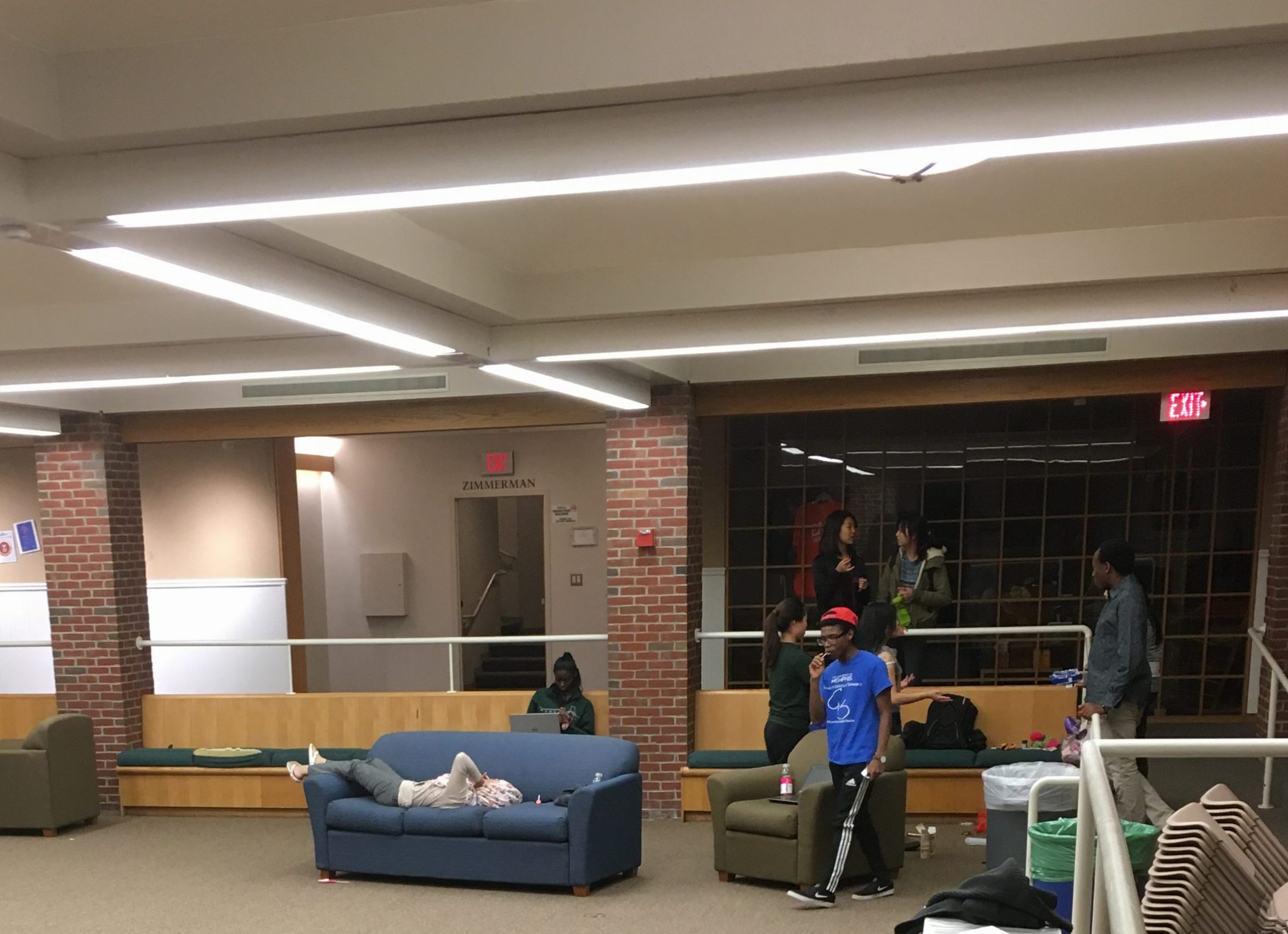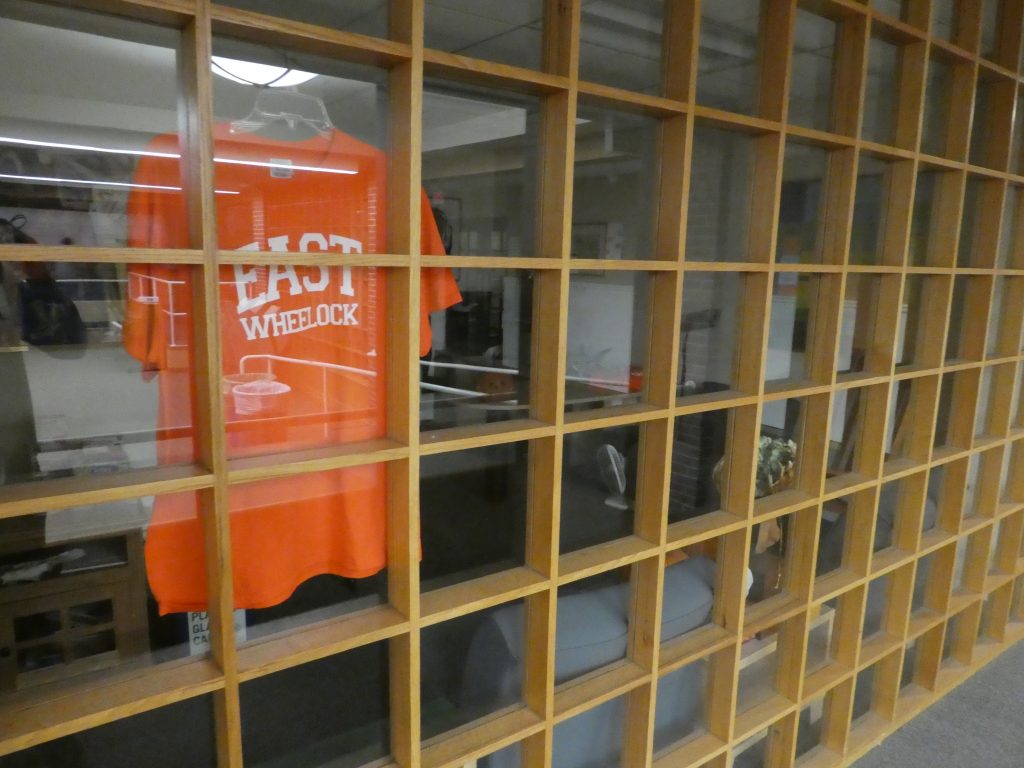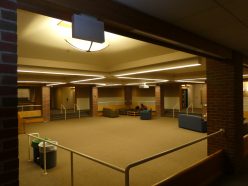
Because the positioning of Brace Commons creates constant interaction, the space can serve as a vital third place in residents’ lives. Ray Oldenburg created the idea of third places, and defines them as spaces that are not the home or workplace, but instead “informal social centers and public gathering places.” He notes that these spaces are often simple and “fall short of the middle-class preference for cleanliness and modernity.” Brace Commons epitomizes these traits of outdatedness and simplicity with its monotonous grey carpet, limited and ripped furniture, and lack of natural lighting.
But why are these third spaces that Oldenburg describes as being vital to having a “relaxed and fulfilling life” so simple and worn-down? Third places are intended to foster focused conversation, and any intrusive, overdone designs might prevent these interactions from occurring. In Brace Commons and third places in general, the design is a background, non-primary focus. For Oldenburg, the actual physical layout of third places is insignificant “unless the right people are there to make it come alive,” and because so many people pass through Brace Commons casually, it is often alive.

I asked one student, Saheer Mathrani, with a friend why he was in Brace, he responded: “I never really intend to spend any time in Brace at all, but I always find myself here because I bump into someone I know…like him.” While many third spaces draw people in with a specific purpose (i.e. people go to pubs for food), many people who pass through Brace Commons do not intend to enter this social, conversational arena. This improves upon the classic notion of a third place, as it promotes even more diverse interaction. Oldenburg celebrates third places, like Brace Commons, for their ability to weave together interactions into “both the basis of community and the celebration of it.”

However, just because third places tend to be worn-down and simple does not mean that designers should plan non-dynamic spaces. Instead, the outdatedness of third places points to the fact these spaces must come about organically through continuous contact. These interactions ebb and flow within the boundaries of our everyday lives, and gradually lead to the creation of a community.

